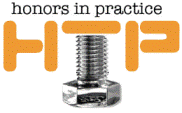National Collegiate Honors Council

Honors in Practice Online Archive
Date of this Version
2017
Document Type
Article
Citation
Honors in Practice 13 (2017)
Abstract
Our primary goal as honors administrators is to deliver the highestquality honors education we can at our institutions; however, this has become more of a challenge since budgets at state-supported institutions have decreased dramatically over the last decade, a situation that Richard Badenhausen characterizes as the new normal. Although he paints a gloomy picture, Badenhausen also suggests that “[m]oney is always sloshing around in the institutional coffers. . . . You just need to know whom and how to ask . . .” (20). As Samuel Schuman wrote in 2006, we learn early in our honors administrative careers that a healthy relationship between honors and higher administration is essential for honors to flourish at any institution. While deans of honors colleges have structural ties to the higher administration, maintaining a strong relationship is often hard for directors of honors programs who do not have a “seat at the table where budget decisions are made” (Railsback 34). Using my own experience as an honors program director, I can illustrate how important a strong relationship with higher administration is to the health of an honors program. Fostering that relationship allowed me to secure approval for curricular development that has been key to the success of the program. By accentuating the success of an established, low-cost, and popular one-credit-hour honors symposium, I was able to garner institutional support for three-credit-hour general education honors courses.


Comments
Copyright 2017 National Collegiate Honors Council